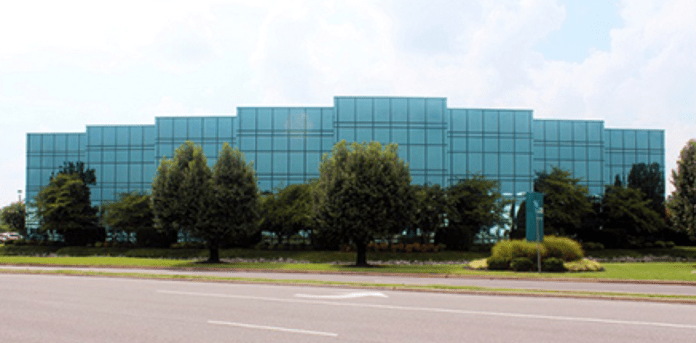Tim Ryan has spent the past four years as Chief Information Officer at Aegis Sciences Corporation, with more than two decades of experience in the life sciences industry. But little could prepare him for what was to come in 2020—a global pandemic that shook the world and his business.
Over a 9-month period, Aegis created COVID testing and increased their COVID PCR testing capacity to 130K specimens per day. This involved rapidly growing the infrastructure and team and developing an entirely new patient portal to provide timely test results. Due to the tremendous work and leadership throughout the pandemic, the company received CIO100 Award for technology innovation. “We’re proud of what we’ve been able to accomplish,” he says.
In this interview, Tim shares with us what it was like for Aegis to respond to the needs of a pandemic, what emerging technology he has his sights on in the healthcare industry, and the importance of being a business partner and not an “order taker.”

Chief Information Officer
Aegis Sciences Corporation
Walk us through your CIO path. How did you decide to pursue a career in technology, and how did you progress to your current organization?
I was a math major in college. In those days, computers were not something that were mainstream, but they were part of the curriculum for a math major and so I needed to take programming classes. And when I took those classes, I fell in love with technology. I decided after graduation to pursue a career in it.
As I progressed through different jobs, I was promoted to a management role and, after this exposure, I decided to go for my MBA in Business and Information Technology. I was fortunate to have relationships with business and IT executives who became my mentors. They provided me with coaching and provided direction which helped me acquire the capabilities to become a CIO. With these experiences, I was able to secure a CIO position and the rest is history.
What initiatives have you overseen to date in your time with your current organization? What’s on the horizon?
Prior to my becoming CIO, Aegis Sciences Corporation didn’t have a robust data strategy. We now have a data warehouse, or data lake, and we’re using the modern Microsoft stack with all the pipelines. We’ve been able to successfully launch that and we’re continuing to grow those capabilities. This is providing the business with the ability to make quicker decisions with data available at their fingertips and self-service capabilities.
We are a toxicology lab as our main product. Due to the pandemic, we decided to add in COVID-19 testing. We’ve reported more than 5 million PCR tests over the past 15 months. We’re one of the larger PCR testing companies in the country. And due to that, we had to pivot. For example, we needed to develop a patient portal within weeks so that patients could go on our website and get their COVID results when they became available, and not have to get them from their doctor, urgent care center, or testing site. We’ve also modernized our infrastructure and storage strategy, as well as our database licensing strategy, to handle the increased volume. We are really proud of what we’ve been able to accomplish.
In your industry, is there a plan in place in case a pandemic occurs, or was this a scramble for your organization?
It was a scramble. One facet of Operation Warp Speed from the government was to increase the amount of COVID-19 PCR Testing. We were fortunate to receive different grants from the National Institution of Health’s (NIH) RADx program to help fund our COVID-19 PCR growth. I think for a company our size, we did as good a job as any to pivot, but there wasn’t a plan in place. In the U.S., every state determines its own reporting requirements – therefore there was not one standard way to report the COVID-19 test results to the individual states. We had to build numerous interfaces to comply with individual state requirements. In addition to this patient portal we had to build, we also needed to send the results to the states and there could be up to 50 ways to do so, plus D.C. and Puerto Rico. That was another challenge.
What new or disruptive technology or emerging trend do you think will impact your industry in the future?
Molecular testing is an area that we’re going to take a deeper dive into. Pre-COVID, we had a handful of people in our molecular lab and, at the height of the pandemic, we had more than 500 people. That will decrease when COVID-19 subsides, however, we are looking into other areas in the molecular space to grow our business capabilities.
Let’s talk about the availability of talent today to help you accomplish the milestones you were able to reach. What do you think about the current state of IT talent that’s available, and what strategies did you employ to recruit and develop that talent?
As we pivoted, we were able to increase our staff and relied on vendors to create resource elasticity for both the business and IT departments. This helped us grow at a faster rate. Also, we were very successful in getting our staff to work remotely, which enabled us to retain and secure talent that was not local to our Nashville location. I do think that over time, there may be talent shortages depending upon the technologies that are being utilized. One of our strategies is to simplify our architecture. This will enable us to upgrade our systems more easily and also will enable us to have additional resource elasticity.
What traits and attributes are essential for today’s technology leader that may not have been as important a decade ago?
I think today’s environment changes more rapidly than it did 10 or 20 years ago. So, while change management has always been an attribute that CIOs and other executives need, I think it’s more at a premium today than it was then. And you need to be able to manage and implement the change in this compressed time frame because – with technology changing – the business changes a lot faster. One disruption can have monumental impacts. Because there are so many more choices, you have to ensure that you don’t do the flavor of the month and that you have a technology roadmap to support your applications in a timely and cost-effective manner. That gets into being able to do continuously learning more rapidly than we needed to do previously.
What advice would you give to someone who aspires to be CIO?
People often have the perception that to grow your career, you need to be promoted to achieve that growth. Sometimes taking on new roles exposes us to new technologies and new businesses. Even if it’s a lateral move or a step backward from a job title perspective, it will actually give you more learnings, increasing your opportunities going forward. Sometimes you must take a step back. Speaking from my own experience, taking on new roles has exposed me to new opportunities and enabled me to grow more rapidly. I think that’s hard for some people to understand, but I do think that’s a key learning.
How do you decompress from the challenges of being a CIO? What do you do for fun?
I’m a huge sports fan. And I have three children and I enjoy watching them engage in all of their activities. I’ve coached a lot of kids over the years in different sports, some with my kids being on the team, and even did that before I had a family.
Who would you say have been your biggest influences in your career path, and why?
There have been so many people throughout my career, and I can’t list them all. Mitch Hanson was my first mentor from a management perspective, and he was the one who enabled me to go from being a technologist to a manager. He eventually became a CIO and is someone I still stay in touch with for mentorship and advice. He helped me understand how to deal with ambiguity. Also, our current CEO Frank Basile has really done a tremendous job of guiding our company through the pandemic. There’s been just a countless number of people.
Are there any books that you recommend, maybe these are books that you give to others or that have shaped you as a CIO?
The Phoenix Project is a great book. I think sometimes technology is treated as more art than science, and we need to ensure that the processes are well-defined and that we have repeatable processes. I also like The Five Dysfunctions of a Team—an oldie but goodie—because it makes you realize that things are not always without conflict and organizations need conflict when it’s appropriate to change. Those two I recommend the most. Then you have some of your traditional books, like The Seven Habits of Highly Successful People, that pretty much most people should read.
Can you give a piece of advice to our readers, say there was a billboard, what would you say on yours?
The key to success is continuous learning. Once you stop learning, everybody surpasses you. That’s a lot of work sometimes, but it’s really a mindset, and there’s never a point when you’re done because the only thing that’s constant is change.
Anything else you’d like to add before we wrap up?
To be successful, you need to be a business partner and not an order taker. We need to understand what problems are trying to be solved and where the business is heading. If you become an order taker, you can only go as fast as the business understands technology, where you really want to be a partner and have technology help shape business decisions.





